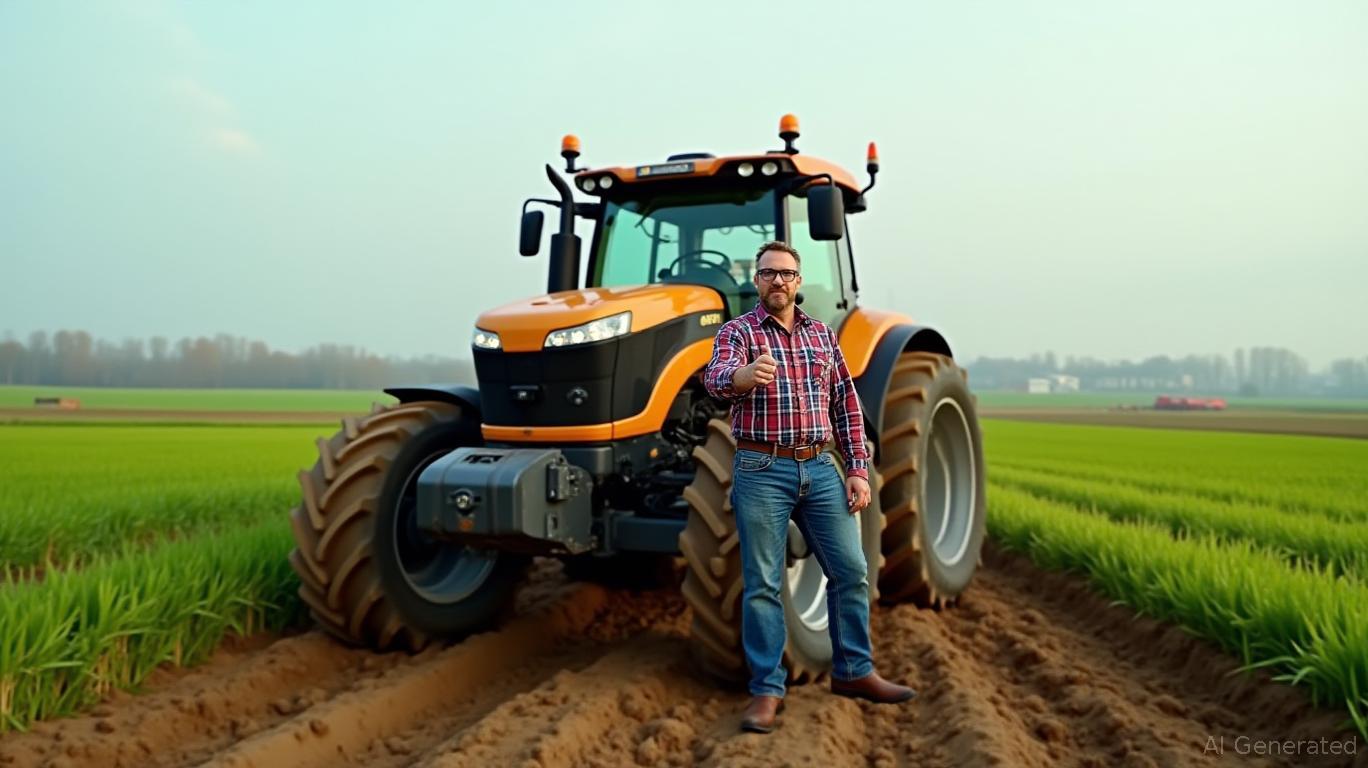AGCO Corporation: Navigating Cyclical Recovery and Integration Hurdles – A Neutral Outlook
AGCO Corporation (NASDAQ: AGCO), a global leader in agricultural equipment, finds itself at a crossroads. Its Q1 2025 results revealed a 30% year-over-year drop in net sales to $2.1 billion, driven by macroeconomic headwinds and operational challenges. Yet, beneath the surface, signs of cyclical recovery and strategic pivots hint at long-term potential. Investors must weigh near-term valuation opportunities against persistent risks tied to integration struggles and geopolitical uncertainty.

Near-Term Valuation: A Mixed Bag of Challenges and Catalysts
AGCO's stock price has been volatile, reflecting its uneven financial trajectory. Over the past year, shares have fluctuated between $25 and $45, pressured by declining sales and margin contraction but buoyed by cost-cutting efforts.
Key Near-Term Metrics:
- Sales Decline: Q1 2025 sales fell 30% YoY, with North America (-34%) and Asia/Pacific/Africa (-36%) hardest hit.
- Margin Pressures: Adjusted operating margins dropped to 4.1%, down from 10.8% in Q1 2024, as production cuts and inventory overhang strained profitability.
- Cost Controls: Management has slashed production hours by 33% and reduced dealer inventories, which may stabilize margins in the latter half of 2025.
The company's reaffirmed guidance—$9.6 billion in net sales and $4.00–$4.50 EPS—assumes a cyclical upturn. If achieved, these figures could support a rebound in valuation multiples. However, risks remain:
Cyclical Recovery Potential: Where the Opportunity Lies
AGCO's recovery hinges on two pillars: regional demand shifts and precision agriculture innovation.
Regional Market Dynamics
- Europe: AGCO's largest market, which accounts for ~40% of sales, shows signs of stabilization. The CEMA Index (farmer sentiment) has improved, and dealer inventories are nearing target levels. Western European tractor sales declined 17% YoY in Q1 2025, but rising dairy prices and livestock sector resilience provide a floor.
- Brazil: Tractor sales rose 11% in Q1 2025, driven by smaller equipment demand. With record soybean harvests and trade policies favoring Brazilian exports, this momentum could extend into 彷2025.
- North America: While sales dropped 34%, U.S. corn prices have risen, and farmer sentiment may improve as grain stocks-to-use ratios tighten.
Precision Agriculture: A High-Growth Lever
AGCO's PTx Trimble partnership, despite goodwill impairments, holds promise. Its autonomous retrofit kit, PTX OutRun, won the Davidson Prize for innovation, addressing labor shortages and yield optimization. The company aims for $2 billion in precision agriculture revenue by 2029—a goal that could redefine its margin profile if executed successfully.
Integration Challenges: The Elephant in the Room
AGCO's struggles with integration risks overshadow its recovery narrative.
The PTx Trimble Dilemma
- Goodwill Impairment: A $354 million write-down in Q4 2024 underscores the PTx joint venture's underperformance. This reflects misaligned expectations or execution failures, with leadership changes (e.g., Seth Crawford's departure) raising governance concerns.
- Lack of Transparency: AGCO has not disclosed PTx's financial results or 2025 outlook, fueling skepticism about its ability to leverage the venture's potential.
Divestiture Fallout
The 2024 sale of its low-margin Grain & Protein (G&P) business reduced complexity but came at a cost. The division's write-down contributed to a $4.92 per-share net loss in Q2 2024, and its absence leaves AGCO more reliant on cyclical equipment sales.
Long-Term Risks: Geopolitical and Financial
- Trade Wars and Tariffs: U.S.-EU/China trade disputes continue to disrupt supply chains and inflate input costs. AGCO's ability to mitigate tariffs via pricing or supply chain reconfigurations remains unproven.
- Debt Burden: With $2.8 billion in long-term debt and free cash flow conversion at 75%-100% of net income, AGCO must balance debt reduction with reinvestment in growth areas like precision agriculture.
- Farmer Income Stress: Weak wheat yields in Europe and high input costs globally threaten demand for high-end equipment.
The Investment Case: Neutral Outlook, Watch and Wait
AGCO's stock trades at ~10x trailing 12-month EPS, below its 5-year average of 14x. This discounts near-term risks but assumes recovery execution.
Bull Case: If dealer inventories normalize, PTx delivers on precision ag goals, and Brazil/Europe demand surges, AGCO could rebound to mid-cycle margins of 14-15% by 2029. This would justify a stock price near $50.
Bear Case: Persistent margin pressures, PTx underperformance, and a prolonged farm income slump could keep AGCO in the low $30s indefinitely, with further goodwill impairments possible.
Historical performance further cautions against aggressive timing strategies. A backtest of buying AGCO on earnings announcement dates and holding for 30 days from 2020 to 2025 showed a -78.41% return, sharply underperforming the benchmark's 99.02% gain. With a Sharpe ratio of 0.14 and a maximum drawdown of -37.48%, the strategy highlighted the risks of relying on earnings-driven timing.
Conclusion: A Balanced Approach
AGCO is a compelling “wait-and-see” investment. While its valuation is attractive and its long-term strategy has merit, integration risks and macroeconomic headwinds demand patience. Investors should monitor dealer inventory reductions, PTx's performance, and free cash flow stability. A dip below $30 could present a buying opportunity, but only if management proves it can execute its turnaround. Until then, AGCO remains a neutral play in an industry facing both recovery hopes and structural challenges.

Comments
No comments yet